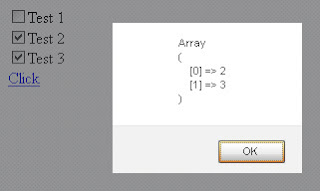Create Database Table
CREATE TABLE `categories` (
`id` INTEGER(11) NOT NULL AUTO_INCREMENT,
`name` VARCHAR(255) NOT NULL,
PRIMARY KEY (`id`)
) ENGINE=MyISAM
Crate Model app\models\category.php
<?php
class Category extends AppModel {
var $name = 'Category';
var $validate = array( //validate
'name' => array(
'rule' => 'notEmpty',
'message' => 'No, no, this field must not be empty!'
)
);
}
?>
Create Controller app/controllers/categories_controller.php
<?php
class CategoriesController extends AppController {
var $name = 'Categories';
function index() {
$this->set('categories', $this->Category->find('all'));
}
function add() {
if (!empty($this->data)) {
if ($this->Category->save($this->data)) {
$this->Session->setFlash('Your category has been saved.');
$this->redirect(array('action' => 'index'));
}
}
}
function delete($id) {
$this->Category->delete($id);
$this->Session->setFlash('The category with id: '.$id.' has been deleted.');
$this->redirect(array('action'=>'index'));
}
function edit($id = null) {
$this->Category->id = $id;
if (empty($this->data)) {
$this->data = $this->Category->read();
} else {
if ($this->Category->save($this->data)) {
$this->Session->setFlash('Your category has been updated.');
$this->redirect(array('action' => 'index'));
}
}
}
}
?>
Create View index app/view/categories/index.ctp
<!-- File: /app/views/categories/index.ctp -->
<h1>Categories</h1>
<?php echo $html->link('Add Category',array('controller' => 'categories', 'action' => 'add')); ?>
<table>
<tr>
<th>Id</th>
<th>Title</th>
<th>Actions</th>
</tr>
<?php foreach ($categories as $category): ?>
<tr>
<td><?php echo $category['Category']['id']; ?></td>
<td>
<?php echo $html->link($category['Category']['name'],
array('controller' => 'categories', 'action' => 'edit', $category['Category']['id'])); ?>
</td>
<td>
<?php echo $html->link('Delete', array('action' => 'delete', $category['Category']['id']), null, 'Are you sure?' )?>
<?php echo $html->link('Edit', array('action'=>'edit', $category['Category']['id']));?>
</td>
</tr>
<?php endforeach; ?>
</table>
Create View Edit app/view/categories/edit.ctp
<h1>Edit Category</h1>
<?php
echo $form->create('Category', array('action' => 'edit'));
echo $form->input('name');
echo $form->input('id', array('type'=>'hidden'));
echo $form->end('Save Category');
?>
Create View add app/view/categories/add.ctp
<h1>Add Category</h1>
<?php
echo $form->create('Category');
echo $form->input('name');
echo $form->end('Save Post');
?>






 How to enable or disable an anchor using jQuery
To prevent an anchor from following the specified href
How to enable or disable an anchor using jQuery
To prevent an anchor from following the specified href


















